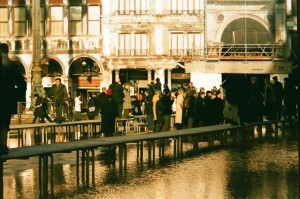I know a lot of people who vow they won?t ever go back to the same destination twice (or more) because they?d rather explore a new one. On the flip side, I know people that go back to the same place every year because they love it that much. I?m somewhere in the middle. I always love a new place, but I have a fondness for certain countries that make it tough to pass up a visit there (ahem? Italy, I?m talking about you).
I?m a person who loves to explore and learn. New experiences are paramount in making my trip fulfilling. So it?s difficult when I travel to a destination and my travel companions, who have never been there, want to visit the same cities and sites that I?ve seen numerous times. Before I go any further, I?ll admit that I realize saying ?oh, not the Coliseum again! I?ve seen it so many times? makes me sound like horrendous travel snob. There?s a reason for this ? in some ways, I probably am. I?m lucky in that I make my living planning travel, that I?ve been traveling the world since I was 16, and that I?ve had the opportunity to visit six continents. So yes, there are repeats and yes, I may begrudge them at times. Still, it?s not fair to my traveling companions to say ?sure we can take a trip to Italy, but we can?t visit Rome, Florence or Venice, or if we have to we can?t see the Coleseum, the Vatican, the David statue or St. Mark?s Square.? If I do this, I?ve pretty much shot down every reason they had for taking the trip in the first place.
Therefore, I?ve learned a few tricks throughout my travels on how to experience an old destination ?for the first time?. Obviously, it?s not the same as exploring somewhere completely new, but it helps bridge that gap between never revisiting a place and feeling short-changed when you head to a repeat location.
? Travel during a different time of year, if possible. I?ve been to Italy in every season (Italy is my most visited country, for the record), and each the various times of year have added a distinctive element to my trip. I have celebrated Easter in Pisa in the spring, cooled off with entirely too many gelatos in the August heat in Rome, and enjoyed all of the fall seasons? gastronomic offerings in Bologna in the fall.
? Take part in a class or local activity. This might be a market tour or wine tasting, a surfing lesson, a tour of a nearby (non-touristy) village given by a local, or anything else that doesn?t involve traditional tourist sites. You may have to do this by yourself or with others that have already seen the ?top 10 attractions?, but it?s ok to not do everything together all the time.
? Take advantage of your camera. If you?ve ever walked around your hometown and taken pictures, you probably see the advantage here. Looking at places through a lens, especially a creative or artistic one, can give a whole new perspective ? literally. I can?t count the number of times I used my zoom lens on a building and details that I never knew were there. Playing with lighting, shutter speed and various lenses (if you have an SLR) can all add to the experience. Now you?re looking for ?what would make an interesting shot? as opposed to ?here?s a cheesy picture of me in front of the Roman Forum?.
? If you?re in a city, and it?s deemed safe, take a night tour (a privately guided option is my personal favorite). This might sound silly, but it?s amazing the different vibe a city can give off at night. The lighting alone can completely change the feel of a city. In addition, night tours may focus on different features of the city.
? Find an ?out of the ordinary? museum. Sure, it?s possible you?ve been to every museum in a city, but it?s pretty unlikely. Find something that isn?t on the tourist radar, or one that you?d not traditionally head to, but that offers something different. I?ve lived in/near Philadelphia for the better part of my life, and I probably haven?t been to half of the museums the area has to offer, at best. There are almost certainly one or two that you?ve not been to at your destination, and probably a whole lot more. You might even discover an interest you didn?t realize you had.
? Connect with a local. Social media makes this increasingly easy these days. I could probably tweet that I?m going virtually anywhere (or at least anywhere where there?s regular internet access, hence social media availability), and I will have at least one or two people respond that they?re from that area. Reach out for a couple of months or more before the trip and get to know people virtually. If nothing else, they?ll have great local suggestions. If you get to know them and feel you can trust them, meet up with them (taking the normal precautions of meeting somewhere public, in daylight, etc) when you?re there. There?s nothing like making new friends while traveling. As an added bonus, next time you ?have to? go back there, you can further escape from the traditional touristy activities by visiting the local friends you made on your previous trip.
Tweet



